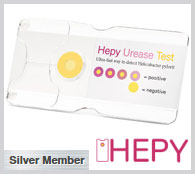New Method for Engineering Human Tissue Regeneration
By LabMedica International staff writers
Posted on 02 Jun 2011
If pending clinical trials prove successful, a new discovery could prove to be a major scientific leap toward human tissue regeneration and engineering. In a research report appearing online, scientists provide evidence to support a major paradigm shift in this specialty area from the theory that cells added to a graft before implantation are the building blocks of tissue, to a new idea that engineered tissue constructs can actually trigger or enhance the body's own reparative processes, including complex tissue regeneration.Posted on 02 Jun 2011
"With the constant growing clinical demand for alternative vessels used for vascular reconstructive surgeries, a significant development for alternative grafts is currently the primary focus of many investigators worldwide," said Christopher K. Breuer, MD, a researcher involved in the research from Yale University School of Medicine/Yale-New Haven Hospital (New Haven, CT, USA). "We believe that through an understanding of human vascular biology, coupled with technologies such as tissue engineering, we can introduce biological grafts that mimic the functional properties of native vessels and that are capable of growing with the patients."
Dr. Breuer also reported that patients are currently being enrolled in a first-of-its-kind clinical trial at Yale University to assess the safety and growth potential of tissue-engineered vascular grafts in children undergoing surgery for congenital heart disease. The study's findings published online May 12, 2011, in the FASEB Journal.
To make this discovery, Dr. Breuer and colleagues conducted a three-part study, beginning with two groups of mice. The first group expressed a gene that made all of its cells fluorescent green and the second group was normal. Researchers extracted bone marrow cells from the "green" mice, added them to earlier constructed scaffolds, and implanted the grafts into the normal mice. The seeded bone marrow cells improved the performance of the graft; however, a rapid loss of green cells was noted and the cells that developed in the new vessel wall were not green, suggesting that the seeded cells promoted vessel development, but did not turn into vessel wall cells themselves.
These results led to the second part of the study, which examined whether cells produced in the host's bone marrow might be a source for new cells. Scientists replaced the bone marrow cells of a female mouse with those of a male mouse before implanting the graft into female mice. The investigators discovered that the cells forming the new vessel were female, meaning they did not come from the male bone marrow cells. In the final experiment, researchers implanted a segment of male vessel attached to the scaffold into a female host. After analysis, the researchers found that the side of the graft next to the male segment developed with male vessel wall cells while the side of the graft attached to the female host's vessel formed from female cells, proving that the cells in the new vessel must have migrated from the adjacent normal vessel.
"There's a very good chance that this study will eventually have a major impact on many disorders that afflict humankind," said Gerald Weissmann, MD, editor-in-chief of The FASEB Journal. "These scientists have basically used the body's repair mechanisms to make new tissues through bioengineering. In years to come, starfish and salamanders will have nothing on us."
Related Links:
Yale University School of Medicine













